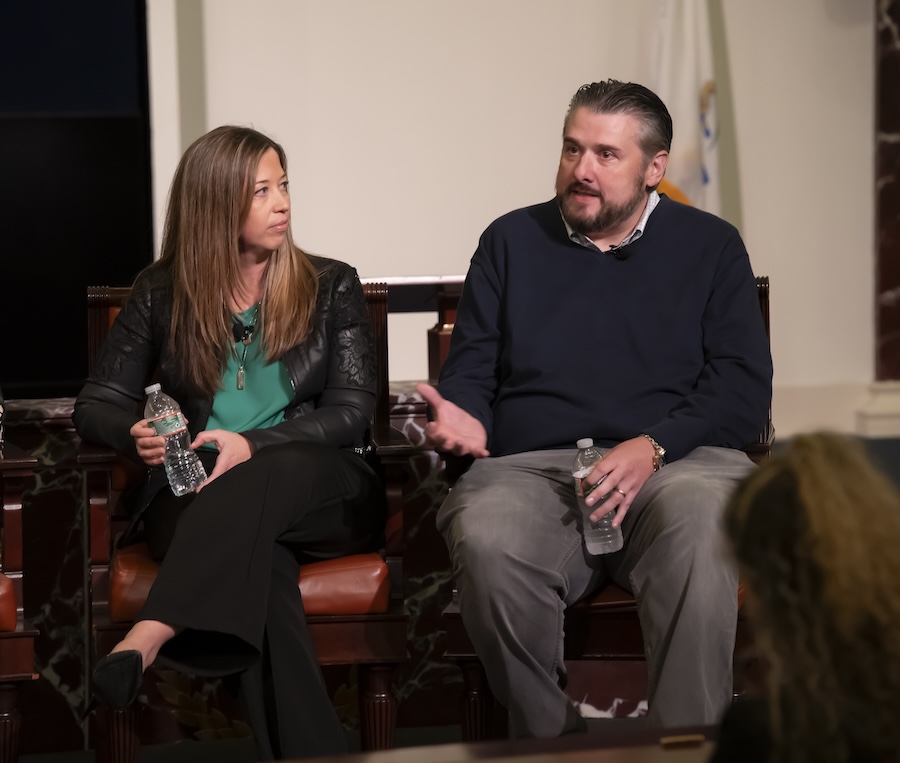The Importance of Giving Workers New Opportunities Within Their Companies


Intuitively, business leaders and HR professionals know it’s important to offer their workers career mobility within their companies. And it turns out research underscores the benefits to both workers and employees. According to McKinsey & Company, internal mobility in the form of advancement and other opportunities leads to less turnover and more engaged employees.
What strategies, programs, and policies are organizations creating to support their employees' career trajectories? How are organizations creating a culture where employees are encouraged to learn other skills and transition into other positions within their companies?
From Day One’s Boston conference last month featured a panel of business leaders sharing successful strategies they’ve implemented in their organizations to support internal mobility.
Career Growth as a Collaborative Effort
“How much onus is on the individual employee, versus the employer, to seek out ways to advance,?” asked Katie Johnston, moderator and reporter for the Boston Globe asked the speakers. Anne Feeley, global talent and success leader at the health-sciences company Revvity, replied that initiative from the employee and employer is equally necessary.
Feeley said that at Revvity, employees are encouraged to ask about advancement opportunities. The company also has an established, annual talent review to strategize individual career development. During the review, their HR partners discuss who has shown interest in other positions within the company. “[W]ho are those personalities who could try new things? And then we really focus 11 out of the 12 months on developing them and progressing those opportunities for them.”
Showing this consistent attention to advancement is crucial, according to another McKinsey & Company report: 70% of employees believe work defines their sense of purpose. Company leaders and managers must match the aspirations of their workers by facilitating programs to help workers find meaning and purpose in their careers. Or they risk losing them.
Jason Cerrato, VP of talent-centered transformation at Eightfold, a talent-intelligence platform, described Eightfold Talent Management, which allows employees to see how their skills can be used in other positions and identifies career openings needing to be filled. Eightfold Talent Management blends employee initiative with organizational guidance and leadership.
Stephanie Ricks, director of corporate development and technology partnerships at Strategic Education, discussed the company’s educational platform Workforce Edge, where workers can browse a library of certifications, degree programs, and courses. Workforce Edge is an innovative solution to underutilized tuition-assistance programs, providing educational and training resources that company tuition-assistance policies often don't cover, Ricks said.
Shardé Marchewski, global head of DEI and social impact at the furnishings company Wayfair, discussed a program called the Career Jungle Gym where employees can seek new positions. Wayfair has also generated an internal-mobility pool where current employees are considered first for newer positions before searching for talent externally. Marchewski explained that in addition to allowing employees to create their career paths, underrepresented employees have experienced more opportunities to apply to different positions.
Maintaining Engagement
What if an employee is happy with their role? What if an employee has already obtained a PhD and is at their highest skill level? In what ways can an organization keep them engaged? Alexandra Kiniry, the regional head of talent acquisition at the industrial and consumer-products company Henkel, recommended providing those employees with opportunities to mentor or lead special projects. “I had one woman on the team 42 years with the company, another gentleman 30 years, and same kind of thing,” Kiniry said. “Just always engaging them in things, in departments that touched our department, or, like I said, that mentorship.”
Feeley shared how Revvity created a “gigs” program where employees spend up to 12 weeks on a project for skill development. Revvity also launched a scientific forum where employees can learn more about their field and receive guidance on their career trajectories.
The goal is to cast a wide net for internal talent to collaborate with managers and leaders for their career trajectory. Employees take the initiative to inquire about other positions, different skills, and special projects that contribute to feeling purposeful within their organizations. Then, by collaborating with managers and leaders on special projects and mentorships by utilizing mobility policies, employees feel a sense of purpose, self-direction, and support within their organizations.

LinkedIn News reported that workers who move internally are 64% more likely to stay at an organization longer than three years. Internal mobility is a sustainable strategy for employer and employee success. “The people that are leaving are often saying, ‘I didn’t know there was a path,’ Cerrato said. “So all the things we’re talking about today are finding ways to both make that more transparent as well as create a broader audience for inclusion.”
Stephanie Reed is a freelance writer focused on news and marketing; Much of her work features small business owners throughout diverse industries. She is passionate about promoting ethical and eco-conscious businesses.
The From Day One Newsletter is a monthly roundup of articles, features, and editorials on innovative ways for companies to forge stronger relationships with their employees, customers, and communities.